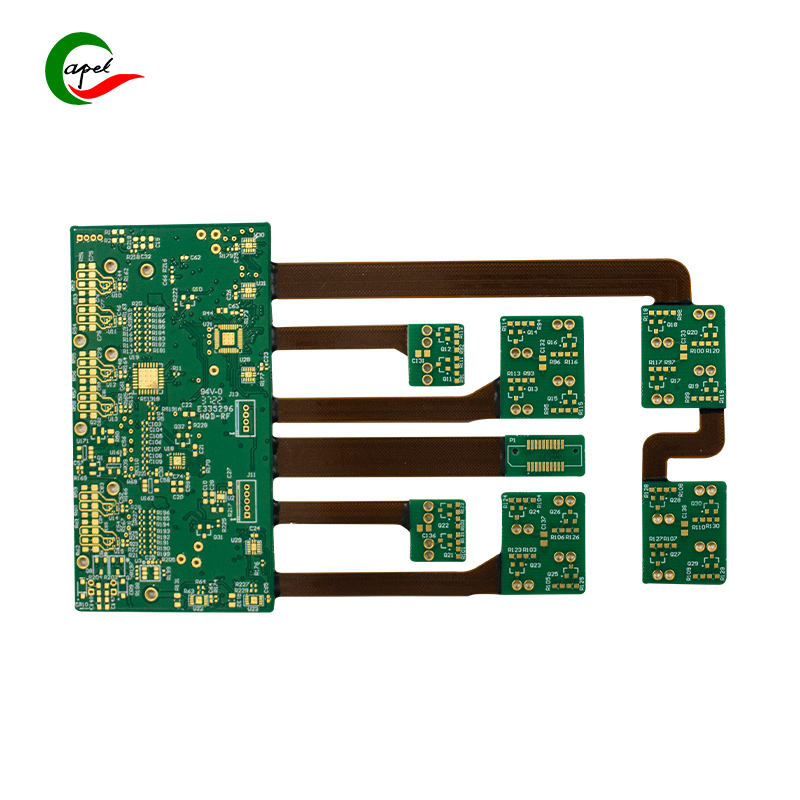As technology continues to advance at an unprecedented rate, the demand for more compact, lighter and more flexible electronic devices has skyrocketed. To meet this need, the development of rigid-flex circuit boards has become a major innovation in the electronics industry. These boards combine the flexibility of flex circuits with the durability of rigid boards, making them ideal for a wide range of applications including aerospace, medical devices, and consumer electronics.
A critical aspect of manufacturing rigid-flex circuit boards is the bonding process. The process plays an integral role in ensuring the stability and reliability of these boards as it firmly bonds the flexible and rigid parts together. In this blog post, Capel will delve into the details of the bonding process, discussing its implications, techniques, and considerations.
Understand the meaning:
The bonding process is critical to maintaining the structural integrity of rigid-flex circuit boards. It involves the application of an adhesive material between a flexible circuit and a rigid substrate, forming a strong bond that can withstand environmental factors, mechanical stress, and temperature changes. Essentially, the adhesive not only holds the layers together, but also protects the circuit from potential damage.
Choose the right adhesive material:
Choosing the right adhesive material is critical to ensuring the long-term reliability and functionality of rigid-flex circuit boards. Several factors should be considered when selecting an adhesive, such as compatibility with the materials used, thermal performance, flexibility, and the specific requirements of the application.
Polyimide-based adhesives are widely used because of their excellent thermal stability, flexibility, and compatibility with both rigid and flexible materials. In addition, epoxy-based adhesives are widely used due to their high strength, resistance to moisture, and chemical substances. It is important to consult the adhesive manufacturer and the rigid-flex circuit board manufacturer to determine the most suitable material for a particular application.
Adhesive Application Techniques:
Successful application of adhesives requires attention to detail and adherence to proper technique. Here we explore some of the main methods used in the rigid-flex circuit board bonding process:
1. Screen printing:
Screen printing is a popular technique for applying adhesives to circuit boards. It involves using a stencil or mesh screen to transfer the adhesive to specific areas of the board. This method allows for precise control of adhesive thickness and distribution, ensuring a consistent and reliable bond. In addition, screen printing can be automated, improving production efficiency and reducing human error.
2. Dispensing:
Dispensing adhesives involves the precise application of material using automated dispensing equipment. This technology allows for precise placement and filling of adhesive, minimizing the risk of voids and ensuring maximum bond strength. Dispensing is often used for complex or three-dimensional circuit board designs where screen printing may not be feasible.
3. Lamination:
Lamination is the process of sandwiching a flexible circuit layer between two rigid layers with an adhesive applied in between. This technology ensures that the adhesive is evenly distributed across the board, maximizing bonding effectiveness. Lamination is especially suitable for high-volume production because it allows multiple boards to be glued together at the same time.
Notes on the bonding process:
While understanding the various adhesive application techniques is critical, there are some additional considerations that contribute to the success of the overall adhesive process. These factors play an important role in optimizing the performance and reliability of rigid-flex circuit boards. Let’s explore some of these considerations:
1. Cleanliness:
It is critical to ensure that all surfaces, especially flex circuit layers, are clean and free of contaminants prior to applying the adhesive. Even tiny particles or residues can impair adhesion, leading to reduced reliability or even failure. Proper surface cleaning procedures should be implemented, including the use of isopropyl alcohol or specialized cleaning solutions.
2. Curing conditions:
Environmental conditions during adhesive curing are critical to achieving maximum bond strength. Factors such as temperature, humidity and cure time must be carefully controlled to meet the adhesive manufacturer’s guidelines. Deviations from recommended curing conditions may result in poor adhesion or bond performance.
3. Mechanical stress considerations:
Rigid-flex circuit boards are often subjected to various mechanical stresses such as bending, twisting and vibration during their service life. It is critical to consider these factors during the bonding process. Bonding materials should be selected with high flexibility and good fatigue resistance to ensure that the bond can withstand these mechanical stresses without failure.
The bonding process in rigid-flex circuit board manufacturing is critical to achieving stability, durability and reliability. Selection of the correct adhesive material along with proper application techniques and precautions can ensure the long-term functionality of these boards in even the most challenging applications.
As technology continues to evolve, the need for more advanced and flexible electronic devices will continue. The bonding process plays a vital role in meeting this need by producing reliable and versatile rigid-flex circuit boards. By understanding the importance of the bonding process and implementing it correctly, manufacturers can create cutting-edge electronic devices that are at the forefront of technological innovation.
Post time: Aug-21-2023
Back







